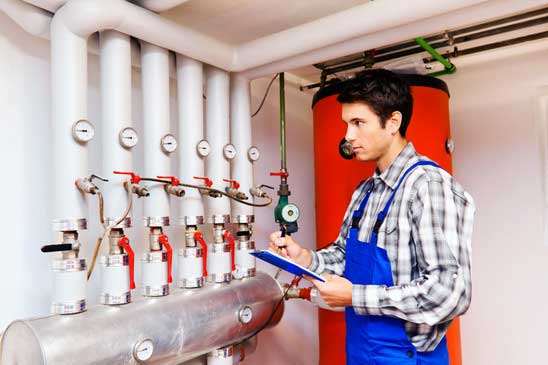When it comes to plumbing issues, many things can be handled by a homeowner. For instance, removing simple clogs from drains, lighting a pilot light, and replacing a broken toilet handle are all do-it-yourself projects. Obviously, this saves money, but there are times when a professional plumber needs to be used.
For more complex jobs, as well as those deemed potentially unsafe, having a licensed plumber do the work is imperative. A great example is gas lines, which are present in most homes. Even small problems should left to someone with years of experience and knowledge in the business.
Things in the Home That Operate on Gas
Some of the more common things that run on gas in homes include the following:
- Air Conditioners
- Central Heat
- Clothes Dryers
- Fans
- Fireplaces
- Heat Pumps
- Heaters
- Hot Water Dispensers
- Hot Water Tanks
- Ovens and Stoves
- Under-Floor Heating
- Water Heaters (Gravity and On-Demand)
Potential Dangers of Natural Gas
While natural gas is a highly efficient and affordable option compared to electricity, there are potential dangers. Keep in mind that when in its natural state, natural gas is both odorless and colorless. Therefore, providers who run gas lines into homes are required to add a nontoxic odorant that makes a leak easier to detect. Typically, this is some type of mercaptan, which produces a smell similar to rotten eggs.
- Gas Leak – If you smell rotten eggs, more than likely there is a leak. In this case, all humans and animals should leave the residence immediately. Once away from the home, call 911 and the gas company. Remember that certain things create sparks that could lead to an explosion, so at no time should a cellphone or landline, or lighter or matches be used near the home. In addition, lights should never be turned off or on.
- Heating Systems – Annually and prior to the start of winter, a plumber should provide maintenance and repair services. Heat exchangers will be checked for rust, corrosion, and cracks; vent pipes and flues looked at for obstructions or separations; and electrical controls and connections checked. The plumber will also test the system for proper ventilation, clean and lubricate furnace filters and the blower system, adjust any burners and pilots, and make sure a bright blue flame is produced by gas appliances.
- Appliance Connectors – These corrugated metal tubes connect gas appliances to gas supply pipes for the home. Connectors that are old and made from uncoated brass are notorious for separating and cracking, which causes a gas leak. Therefore, any of these connectors need to be replaced by a professional.
- Piping – At no time should a residential natural gas line be replaced by a homeowner. Instead, a licensed plumber should handle the job and, if needed, bring in a contractor to install flexible stainless steel or rigid piping. The plumber will also look for CSST (corrugated stainless steel tubing), which has been installed in many homes since 1990. Homes with CSST are at risk for a gas leak or fire should the home ever be struck by lightning. If found, a special bonding device would be installed to reduce risk in the event of a lightning strike.
- Service Lines – Both service and main natural gas lines are maintained by the utility company, but those that run from the meter to appliances are the responsibility of the homeowner. Regular inspections are critical to ensure operation is appropriate and safe.
- Flooding – Many people never think of gas risks being associated with flooding, but excessive water can damage appliances that operate on gas. For instance, controls and/or burners of an appliance can be under water during a flood. Prior to trying to relight the appliance after the water has receded, a plumber must first conduct an inspection.
- Digging and Drilling – Another way to avoid danger is by hiring a licensed plumber to check an area before any digging or drilling takes place. In most states, gas utility companies provide a special phone number to call, at which time a company representative will perform an inspection, but a plumber can also determine any potential risks. In addition to loss of service after striking a gas line, there is major risk of explosion.
Carbon Monoxide
Carbon monoxide is another dangerous gas that is odorless and colorless. This gas is produced when there is inadequate ventilation while burning fuel, including propane, kerosene, gasoline, heating oil, charcoal, natural gas, and wood. Examples of symptoms of carbon monoxide poising are fatigue, nausea, headache, and dizziness. To prevent this risk, proper ventilation is imperative. A plumber can also perform certain tasks to prevent a problem from developing:
- Install vent-less heaters
- Inspect and test all gas-operated appliances
